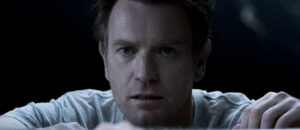Mary Poppins Returns
Movie Rating:
4
The title of Mary Poppins Returns perfectly encapsulates just what you’re going to get from this sequel to Disney’s live-action/animation classic. Unapologetically nostalgic, Rob Marshall’s new musical feels like a film out of time. Save for some technological improvements and a more diverse cast, this could have comfortably emerged intact some five decades ago.
From the staging to the sets to the singing to the songs, everything is meant to evoke Robert Stevenson’s 1964 film. Chimney sweeps are traded for lamplighters, but beat-for-beat this is a mirror of the original’s narrative and tone.
The whole thing would collapse without a new lead who could compare favorably to Julie Andrews’ iconic performance, and Emily Blunt more than lives up to those heightened expectations. In a word, she’s wondrous. Her accent is ice-cuttingly sharp, and her sense of control in the midst of whimsy is the film’s greatest gift. Even in Vaudeville romp where she drifts to Cockney airs, her elegance and grace command attention.
Without Blunt’s involvement, the film would be little more than a cover version of the original. Thankfully, her presence is so warm and inviting that it makes the argument for this iteration. Lin-Manuel Miranda does his utmost to live up to the charms that an elastic, ecstatic Dick Van Dyke brought, but despite a smattering of spoken-word elements reminiscent of his musical theater work, his role is never quite as indelible.
A brief but welcome cameo from Van Dyke himself shows that, even with only a few moments on screen, he still captivates in ways that some of the modern cast simply cannot. The same can be said for Angela Lansbury, whose appearance is equally welcome in a small role based on a character from the novels.
That’s not to say that the inclusions of Emily Mortimer, Ben Whishaw, Colin Firth, and Meryl Streep are unwelcome. They’re all obviously performers of the highest caliber. The issue is that they often feel like they’re parroting what came before instead of completely living within the film the way that Blunt manages to accomplish.
Marc Shaiman’s score is, again, evocative of the original, and his sensitivity to previous musical forms is unparalleled. (Just look to Hairspray for some of his most wonderfully nostalgic work.) On first blush, none of the new songs are quite as spectacular an earworm as “Supercalifragilisticexpialidocious,” but wait ’til parents hear “A Cover Is Not the Book” and “Trip a Little Light Fantastic” to the point of nausea and see how fitfully they’ll stick in one’s head.
The storyline is clever enough. Mary returns to help a generation later, finding the children that she helped in the original film now grown up, with the troubles of adulthood leaving the absurd events of their youth a half-forgotten memory. This allows Mary to both remind the adults of their inner children, as well as gift the children of her former wards with her presence.
Quite literally, this is what the film does for audiences, letting adults who grew up on repeated viewings of the classic share a new yet comfortably equivalent version with their own offspring. That’s the raison dêtre of the entire enterprise, and on that grounds, Mary Poppins succeeds quite well.



William Henley
Thanks for this review. I am actually planning on hitting up the theaters over the holidays to see this. I am not a big fan of theaters anymore, but I will go for this!